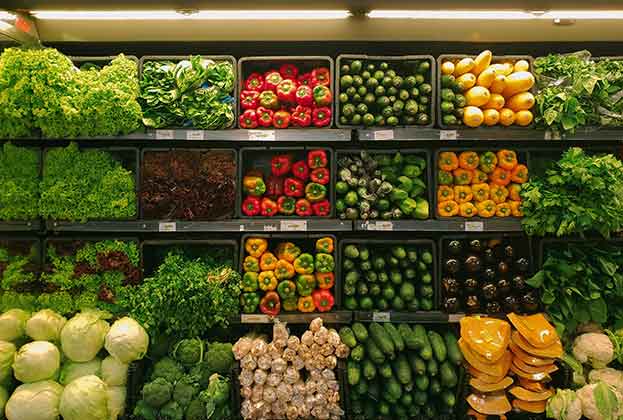Are supermarkets the biggest winners (or the smallest losers)?
According to the Office for National Statistics UK retail sales declined 5.1% in March from February, the largest drop since the agency started collecting the data in 1996. Non-food store sales were particularly badly hit , down 19.4% month on month. The sharpest decline however was in clothing which saw a decrease of 34.8% in the same period. Given the lockdown was imposed toward the end of March, another large decline in overall retail sales is set to be reported for April.
However, food sales and online-only firms were the only areas to see growth. Supermarkets and other food stores recorded a 10.4% increase in sales, while alcohol sales jumped 31.4%. Out-of-town convenience retail has remained open and trading throughout accounting for more than a third (35%) of the essential retailers permitted to trade immediately following the government sanctions. As a proportion of retail warehousing in isolation, the supermarkets left trading accounted for 39% of the out-of-town retail markets overall floorspace and just under two thirds of what was deemed as essential in that sector (see below).
The ‘essential’ status of large foodstore operators not only reflected well proportionally, in what was left open and trading in the UK retail market at the end of March. Consumer habits in the month following also changed in response to lockdown restrictions which have also seemingly favoured the industry. Research from Kanter suggests that the amount families spend on a shopping basket has reached a record high, with the £26.02 being spent per supermarket visit, £7 higher than this time last year.
The surge in spending has been accompanied by a fall in the number of shopping trips customers are making, as they contend with lockdown measures and queues to enter supermarkets. Consumers are food shopping less frequently but spending more when they do, whilst relying on local convenience stores for more frequent, small, additional top-up purchases to supplement their grocery shop. The rise in grocery spending has reflected well across the UK’s major supermarket brands. In the three weeks to April 19th Sainsbury’s sales grew by 8.4%, Tesco’s were up 7.2% while Morrisons and Asda had rises of 4.3% and 3.5%, respectively. Both the Co-op’s and Ocado’s sales rose by a fifth in the same period.
It is not all good news for supermarkets, however. Some foodstore operators have reported that the implementation of social distancing measures is now starting to temper both their in-store sales and profit margins as they are simply unable to serve the same volume of consumers as before. Furthermore, they have had to increase staff levels in order to implement such social distancing measures. Anecdotal reports suggest that one value grocer has seen a recent 40% decline in in-store sales due to social distancing rules. Although it seems supermarket operators were initially the biggest winners with large sales increases during the panic buying phase, as the situation progresses and social distancing measures become more commonplace they too may feel the squeeze on their ability to turn a profit, suggesting thus far they are perhaps the retail industry’s smallest loser instead of its biggest winner.
Read the articles within Spotlight: The initial impact of Covid-19 on the retail and leisure market below.
.jpg)

.jpg)
.jpg)

.jpg)
.jpg)